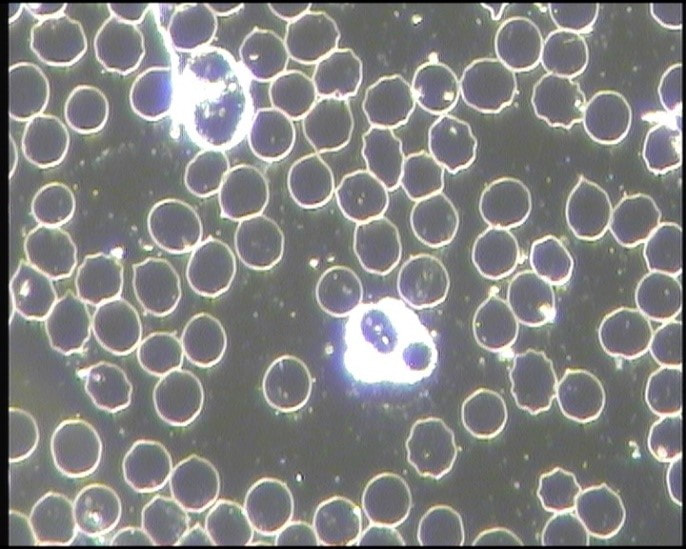|
By: Dr. Marlo Swanepoel
An LBA is a screening test use to give us as practitioners a broad overview of your health situation. An LBA is not a definitive diagnostic tool but, it is a tool that assists us to identify possible disease-causing problems. As your blood come into contact with your entire body, the blood and changes within may generate a picture of your health status. It may be compared to a blood smear. This is a laboratory test to evaluate your red blood cells (RBCs), white blood cells (WBCs), and platelets. It is used to distinguish between the different types of WBCs, and to determine their relative percentages in the blood, which assist us to detect, diagnose, and monitor a range of deficiencies, diseases, and disorders involving blood cell production, function, and lifespan. An LBA however does not make use of stains of chemicals preventing blood clotting. LBA is composed of bright and dark fields. With standard bright field microscopy, you see the object you want to view, lit by bright light.
Darkfield microscopy blocks the light from the surrounding area so that you see the magnified images against a dark background. This allows better contrast and a better view of unstained specimens.
As mentioned previously we mainly look at is your red and white blood cells. It is quite easy to identify the types of white blood cells, which allows us to instantly see and identify any changes, which may indicate certain disease states.
Certain shapes and sizes of your red blood cells might also indicate a possible conditions and nutrient deficiency, for example possible Vitamin B12 deficiencies, as Vitamin B12 plays a major role in the synthesis of red blood cells. The plasma of the blood (the watery substance in which the blood cells float) also indicate some disease conditions. This is mainly where some intracellular parasites may be seen. How does the process work? Your finger will be pierced with a lancet. A small drop of blood will be taken and placed on a glass plate, which is then covered with another thin glass film. This is then placed under a microscope. Generally, the practitioner will be able to project the microscopy field (what the Dr. can see) onto a larger screen allowing the patient to visualise their own blood. What do we at the NAHCC use LBA for? An LBA gives you a visual representation of what your blood looks like, which impacts your health. It empowers both the doctor and the patient with valuable health information. Generally, when patients can visualize potential problems, and see how things work, they tend to better adhere to treatment plans. We at the NAHCC use LBA as an additional screening tool to assist in the treatment and management of our patients. By no means does the LBA replace required laboratory tests, it is merely used as a screening tool, similarly to what a finger prick test is used to screen for diabetes and high cholesterol.
0 Comments
Leave a Reply. |
AuthorsDr. Marike de Klerk Categories
All
|
All rights reserved Naturopathic Health Care Centre
ADDRESS: No 13 Hazelwood Road, Hazelwood, Pretoria
TELEPHONE: 012 460 9216
PAIA Manua
Website design and digital marketing by Plan Me Pretty (PTY) Ltd
TELEPHONE: 012 460 9216
PAIA Manua
Website design and digital marketing by Plan Me Pretty (PTY) Ltd



 RSS Feed
RSS Feed